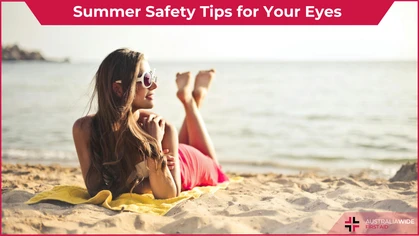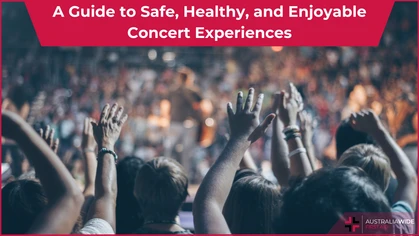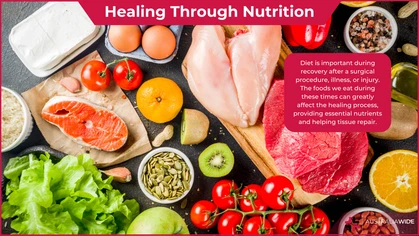How to Beat the Hidden Dangers of a Sedentary Lifestyle

General Health-Related

A person is generally considered to be inactive if they do not do at least thirty minutes of physical activity on most days of the week. Luckily, there are ways to insert more activity into your lifestyle and thereby improve your overall health.
A sedentary lifestyle means the same as an inactive lifestyle and those two terms are used interchangeably. You lead a sedentary lifestyle when you are inactive (sitting or lying down) for long periods of time, with very little to no exercise. The Australian Government Department of Health and Aged Care uses the term “sedentary behaviour” defining it as spending a lot of time being inactive at school or work, traveling or relaxing. That also includes screen time such as watching movies, playing video games, and scrolling through social media. According to the Australian Bureau of Statistics, almost half of employed people aged 18-64 in Australia are inactive mostly sitting at work. This article explores how inactivity affects the physical and mental health of those who spend most of their day sedentary, and what changes can be made to avoid undesirable consequences.Inactivity in Australia
WHO states that physical inactivity causes 2 million deaths a year worldwide. In Australia, it’s been ranked second only to tobacco smoking, in terms of the effect it has on disease and poor health. Lack of physical activity leads to cardiovascular disease, type 2 diabetes, and obesity, as well as increasing the risk of bowel and breast cancer. An Australian Burden of Disease Study in 2018 shows that the burden due to insufficient physical activity was:- 20% for type 2 diabetes
- 16% for coronary heart disease
- 16% for uterine cancer
- 12% for bowel cancer
- 12% for dementia
- 9.2% for stroke
- 3.2% for breast cancer
Am I leading a sedentary lifestyle?
Even though we get the idea of what a “sedentary lifestyle” is, we still tend to wonder how many hours a day we need to be sitting down to fall into the “sedentary” category. According toWhy are you leading a sedentary lifestyle?
Some of the most common reasons why we are sedentary are:- Poor health;
- Injury followed by a recovery time spent inactive;
- A job where we spend most of our working hours sitting down (office or work from home);
- Habits or laziness.
How a sedentary lifestyle affects you physically
We have already mentioned the long-term consequences in one of the sections above and now we will cover the immediate effects on your body. Here’s what happens to your body when you sit for many hours almost every day:Your blood circulation slows down
When you sit a lot, you move less, therefore not giving your heart a chance to pump blood to your organs and body parts efficiently, thus not delivering enough oxygen and nutrients to organs, limbs, and brain. This leads to slower cell regeneration because toxins and waste product removal are not optimally achieved. Insufficient blood flow can also be the cause of swelling, numbness in the legs, and eventually, varicose veins because the blood that is returning to the heart is slow to return and pools in the lower legs.Muscle fatigue, weakness, and muscle mass loss
Muscle fatigue is a reduction in the force or power that the muscle can produce and it commonly happens due to a lack of exercise leading to slow oxygenation. A fixed position (e.g. sitting upright) requires the muscles to hold the trunk, neck, and shoulders in a fixed place reducing the blood supply to the working muscles and causing fatigue. Sitting for an extended period also leads to the weakening of the large leg and gluteal muscles, increasing your chances of injury when you get to exercise. The insufficient activity also leads to muscle mass loss which can result in joint inflammation and osteoarthritis.Bone mass loss
A sedentary lifestyle makes you prone to bone fractures due to osteoporosis. Osteoporosis is a condition of extremely weak bones which results in loss of bone mass. When you are not loading your body (e.g. doing weight-bearing exercises), you are not providing a loading stimulus to your skeletal system.Back pain
You could get pain in any joint however lower back pain seems to be the most common complaint of those who spend long hours sitting down. The more pain you experience, the less likely you are to exercise and be active, resulting in more pain, creating a vicious cycle, and eventually weight gain and other problems associated with that.Insulin resistance
You have an increased risk for Type 2 diabetes if you lead a sedentary lifestyle. Prolonged physical inactivity leads to insulin resistance which is when cells in your body don't respond well to insulin and can't easily take up glucose from your blood, whereas an active lifestyle makes your cells more responsive and take up that glucose (so that there is less in the bloodstream), thus helping prevent or delay Type 2 diabetes.Digestive Issues
Sitting down slows digestion because it causes your abdomen to compress. As a result, you could get bloated or constipated. Being constipated means your bowel movements happen less often than normal.How a sedentary lifestyle affects you mentally
A sedentary lifestyle also harms your mental well-being. It is associated with depression, anxiety, and chronic stress. Over time, you may find your motivation decreases and it becomes difficult to go and do things that you used to enjoy.How to become more active
Our bodies are designed to move, so let’s look at ways to make them move more. Even though we aren’t always able to quit our desk jobs, recover from the injury very quickly, or get rid of that back pain in a heartbeat to become more active right away, we can take small steps, and do what we can, depending on the current situation. The key is to take action now. If you are not in a position to change your situation right now, e.g. can’t quit the job, here’s what you should do to reduce the amount of time spent sedentary:- Sitting too long can kill you no matter how much you exercise - take a movement break every 30 minutes (If you were to implement only one thing today - this is the one);
- Ask for a stand-up desk (or get one yourself if you work from home);
- Walk to work or park further away from the office;
- Use your break to go for a walk;
- Join a gym and do weight-bearing exercises 2-3 times a week;
- Adopt a dog so you have to walk him several times every day;
Final thoughts
To learn more about how to eat and move your way to wellness, check out the below articles and book a first aid course with us today:
Originally published at
https://www.australiawidefirstaid.com.au/resources/sedentary-lifestyle
as part of the Australia Wide First Aid Articles Library









